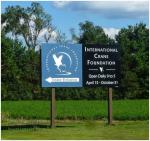 Another cool thing about Baraboo, Wisconsin, is that it’s home to the International Crane Foundation (ICF), which definitely caught my interest. Steve gladly dropped me off so I could enjoy some “alone time” with my feathered friends.
Another cool thing about Baraboo, Wisconsin, is that it’s home to the International Crane Foundation (ICF), which definitely caught my interest. Steve gladly dropped me off so I could enjoy some “alone time” with my feathered friends.
The cranes here aren’t in the wild – ICF is home to a captive population of cranes on their 225-acre campus in Baraboo, including the only complete collection of 15 recognized species in one place. Yes, all 15 species of cranes in the Gruidae family are at this facility. Be prepared for bird pictures (Steve’s yawning)!
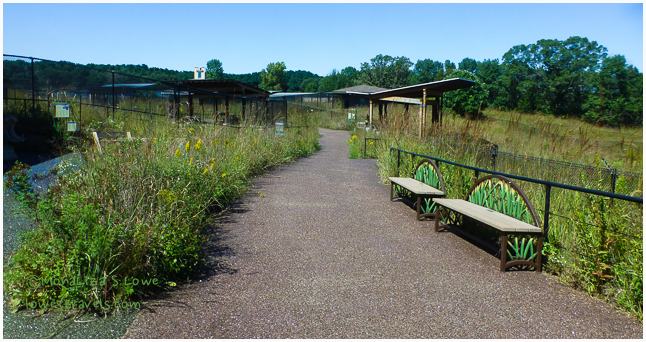
In 1973, two friends (Ron Sauey and George Archibald) who shared a passion for cranes founded the International Crane Foundation. Their dream was to save the cranes of the world, and that vision has been the driving force behind ICF ever since.

The ICF’s stated mission is to work worldwide to save cranes, and to conserve the ecosystems, watersheds and flyways on which they depend. ICF is dedicated to providing experience, knowledge, and inspiration to involve people in resolving threats to these ecosystems.
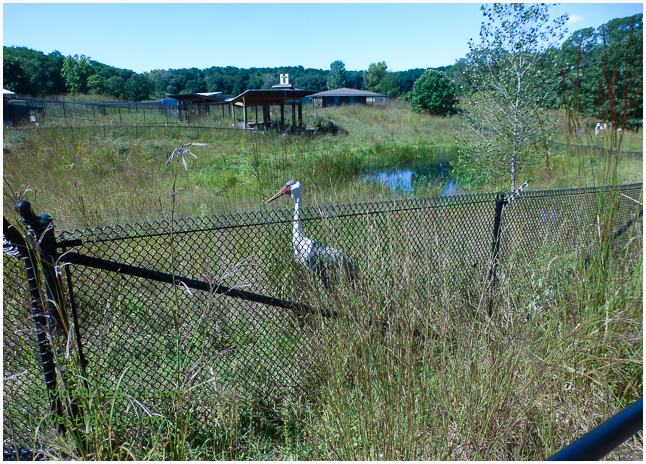
I joined a tour, the best way to learn about the mission and goals of ICF. Having an educated guide helped me to appreciate each species of bird, as he talked in length about the crane’s habitat, the path of their flyways and the current threats to their survival. These birds had their wings clipped, so they won’t be migrating anymore. But they seemed to be happy here, and I was very happy to see so many of them in one place!

According to the conservation status designations assigned by ICF, the handsome fellows shown below are considered Endangered:

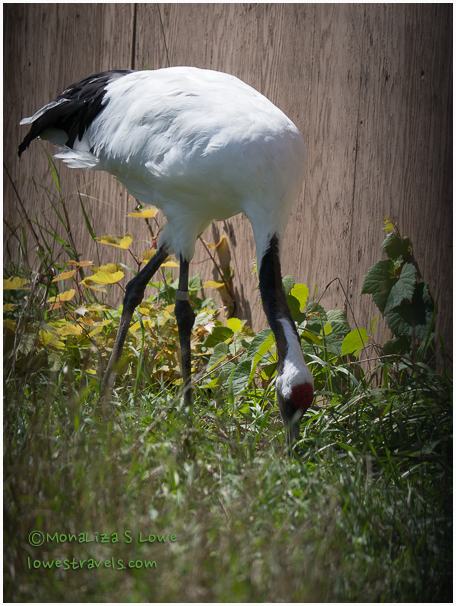
The last recorded observation of Siberian Cranes from the central Asian flock was in 2002. Along with Whooping Cranes, the Siberian birds receive considerable conservation efforts as they are primarily threatened by hunting and risk from loss of wetland habitat. They are classified as critically endangered, which means the species is facing an extremely high risk of complete extinction in the wild.
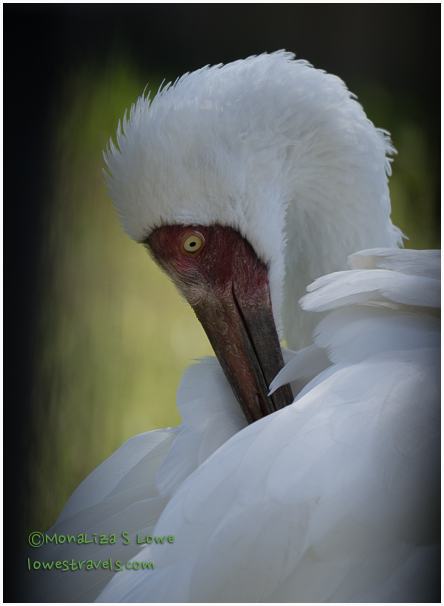


ICF also classifies the following as Vulnerable:
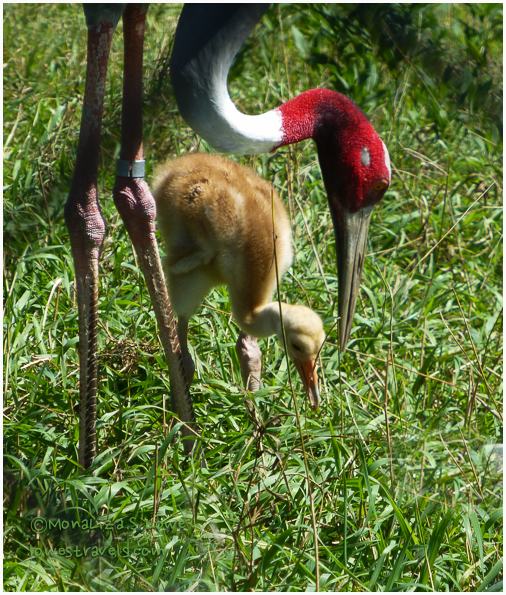

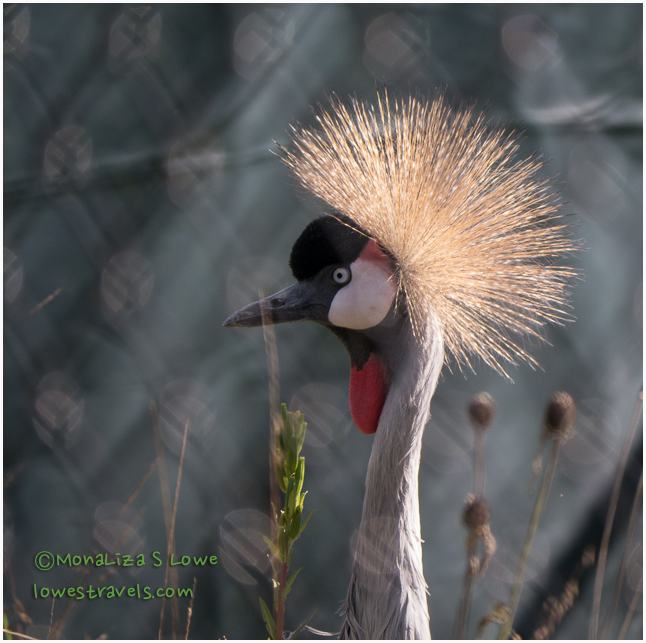


And these beauties are still abundant in the wild that they are designated as Least Concern:
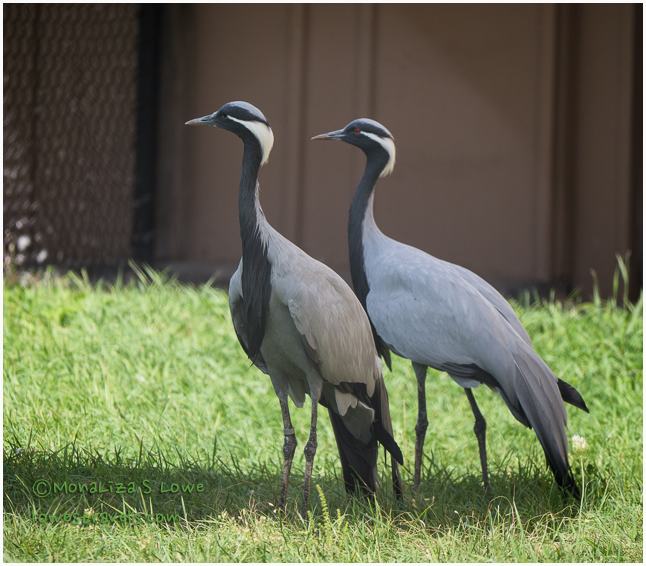
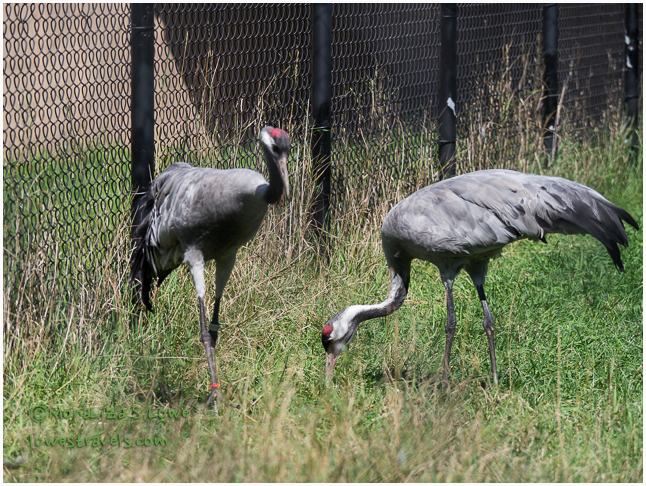

I learned from the tour guide that the total number of cranes in the facility varies from season to season, but they normally have between 100-120 birds. They usually have about 30 on display – always in male and female pairs. Another area of the facility, consisting of 65 pens, is called “Crane City”. It’s off-limits to the public, since this is where cranes breed and they are sensitive to disturbances from people.
For those who are counting, you may have noticed that I didn’t include Sandhill Cranes in this story. There were a couple here, but I’ve already hung out with thousands of them as they wintered in Arizona – and wrote a story about them here. They remain listed as Least Concern.
But the stars at the ICF are the endangered Whooping Cranes –
The Whooping Crane’s recovery is one of conservation’s most inspiring success stories. From the tour I learned that only about 600 Whooping Cranes exist in the world today. Their historic decline to near extinction, and gradual but fragile recovery, is among conservation’s best known success stories. Since 1973, the ICF and their partners have made great strides in protecting and re-introducing these birds, but the job is far from completed.

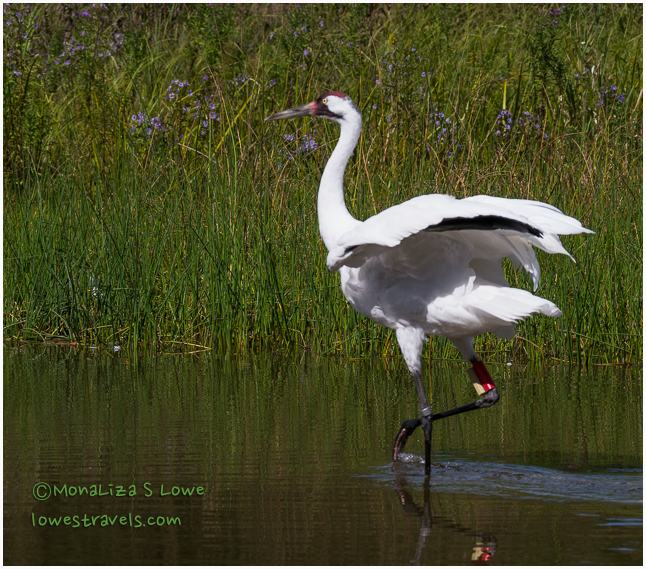
In the 1980’s, ICF researchers began experimenting with “costume-rearing” of cranes. This involves workers wearing full-length crane costumes to hide the human form, and using crane hand puppets to feed and interact with the chicks. No talking is allowed, either. OK, I know what I’m going to wear to my next Halloween party!



ICF and its partners return Whooping Cranes to the wild through Direct Autumn Release, ultralight-led migration, and other other re-introduction methods. Since 2001, ultralight aircraft pilots have acted as surrogate parents to guide captive-hatched and imprinted Whooping Cranes along a planned migration route – beginning in Wisconsin and ending in Florida’s Chassahowitzka and St. Marks National Wildlife Refuges. Amazing!
Whooping Cranes migrate over 2,500 miles from their breeding grounds in western Canada to their winter digs on coastal wetlands near and within the boundaries of Aransas National Wildlife Refuge in southeastern Texas. We’re going to spend part of this coming winter there, so I’m excited to see these birds in the wild in a few months!
I thoroughly enjoyed my day as I was educated about the beautiful cranes. So, if you’re in the area and are interested in cranes, or in the ICF, the $9.50 fee is well worth it!
For more information about the International Crane Foundation, click here.
For more information about conservation efforts for the Whooping Cranes, click here.
To check out ultralight-led migrations, click here.
OMG, I would have thought I was in heaven to visit such a place! Your photos are stunning MonaLiza and I can just see you with a big smile on your face for the entire time you were there. 🙂
Oh yes, you are absolutely right LuAnn. I had plenty of time to snap all angles of the birds with no one nagging behind me. Ha ha . And yes I learned a lot too!
😀
What an awesome story illustrated with beautiful photos! You can betcha if I ever close to ICF…we will make a stop there! Thanks MonaLiza!
Do stop when you can, Gay.
Oh yes, I am into cranes! And what a fabulous stop that was for you and a great write up you did. What a beautiful variety this breed comes in! Thanks so much for sharing this.
We are heading for TX in Feb/Mar…perhaps our paths will cross once again!
Wow…..so cool!!! Putting on my radar….what a photographers dream day. You caught some beauties!!!
When you head up north again, Id say Baraboo is an excellent stop. Just don’t try to book at Devils lake during holidays.
Your photos are just amazing! Perhaps the ICF could like to this great post if you can let them know about it. Thanks for sharing with us!
Oh thank you for your kind words.
I’lI refrain from saying ‘I hate you’ to just saying how jealous I am LOL. I’ve wanted to visit this facility since I first learned about the whooping cranes last winter. I can’t wait to share the whoopers with you this winter. Hey, how about you and I go to the Aransas Wildlife Refuge and Steven and Al can visit the USS Lexington? Al learned how to fly on and off this “boat” aka aircraft carrier 🙂
Oh yes, I can see us now in our Camo outfit and camera slinging, leaving our hubbies behind. Im really looking forward to our birding adventure. We will be there 12/15 to 1/15.
I knew there is such a thing as a Whooping Crane. I never in my wildest dreams knew there were so many other species. They are gorgeous.
I would have enjoyed this facility. I am not a birder but do enjoy the big guys. Your photos are gorgeous. You got some great poses. Sounds like a fun, educational day:)
I had a great time not mentioning the learning I got as well. Thank you Pam, It was difficult to pry me out of there just watching them.
Beautiful! I had no idea there were so many different kinds of cranes! Your photos are beautiful and I learned so much reading your story. Our first Sand Hill Crane sighting was watching a pair cross a highway in the middle of Michigan as we drove by. We’ve also seen them in Florida. Whooping Cranes are on my must see list and we are hoping to catch a glimpse of some in the wild on one of our upcoming trips.
I only know of two kinds of cranes until I got there. Thank you, glad that you like this Crane story. This winter we will be in Port Aransas in TX and I know that the Whooping Cranes winter there as well.
Having three of these on my blog photoed in the wild I’m pleased to see that someone is trying to preserve them…. Love the South African three….
Yes, If I remembered right Lorna is one of them. ICF have African programs as well, check this link out
http://www.savingcranes.org/africa.html
What a great post! Your pictures are fantastic. This is going on my list of must visit places. What great work they are doing. I smiled all the way through reading this especially at your costume remark and the ultra light led migrations. I jut love this. So glad these folks have tried to make up for what other folks have done to decrease the crane’s numbers. Thanks so much for this informative post.
Thank you, I think that you would like to visit this place. The work they do encompasses the flyways and wintering areas for these cranes and they are quite successful.
Ahhh your paradise! 😀 They all look pretty esp. the crowned ones.
MonaLisa, you had me at “cranes.” This is such a great post, Eric and I would LOVE visiting this special refuge. What wonderful work these folks are doing — and your photos are absolutely the best.
I agree Laurel, you will leave happy and educated when you visit this place.
I’m not much of a birder, but those are some cool cranes!! Lovely pics!
Nina
Here’s what I think: I think I’d like to reblog this. Would that be OK with you? I live in Wisconsin and blog about the whooping cranes (that are being re-introduced here) and the natural resources that sustain them, and the rest of us. The ICF is an amazing resource, with amazing people doing great work for the cranes worldwide. You’ve done a fantastic job of showing off their best work – those big, beautiful birds.
Oh yes, please do. And yes ICF is a great organization. We will be in Port Aransas in January. I hope to see the Whooping Cranes there at the preserve, so watch for my blog about them then.